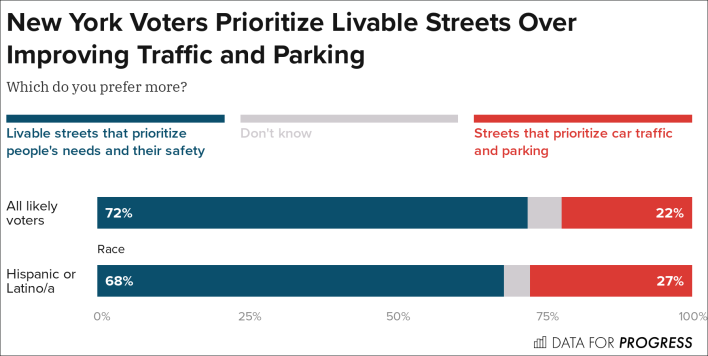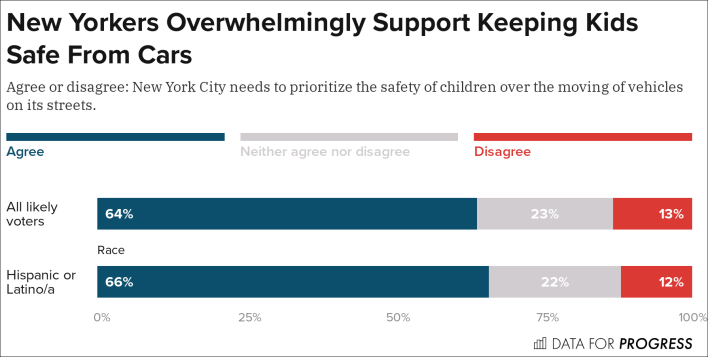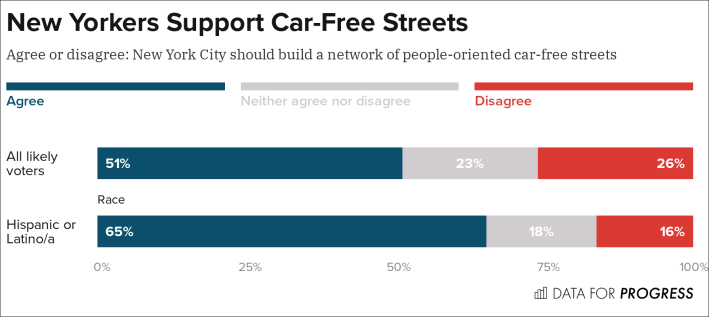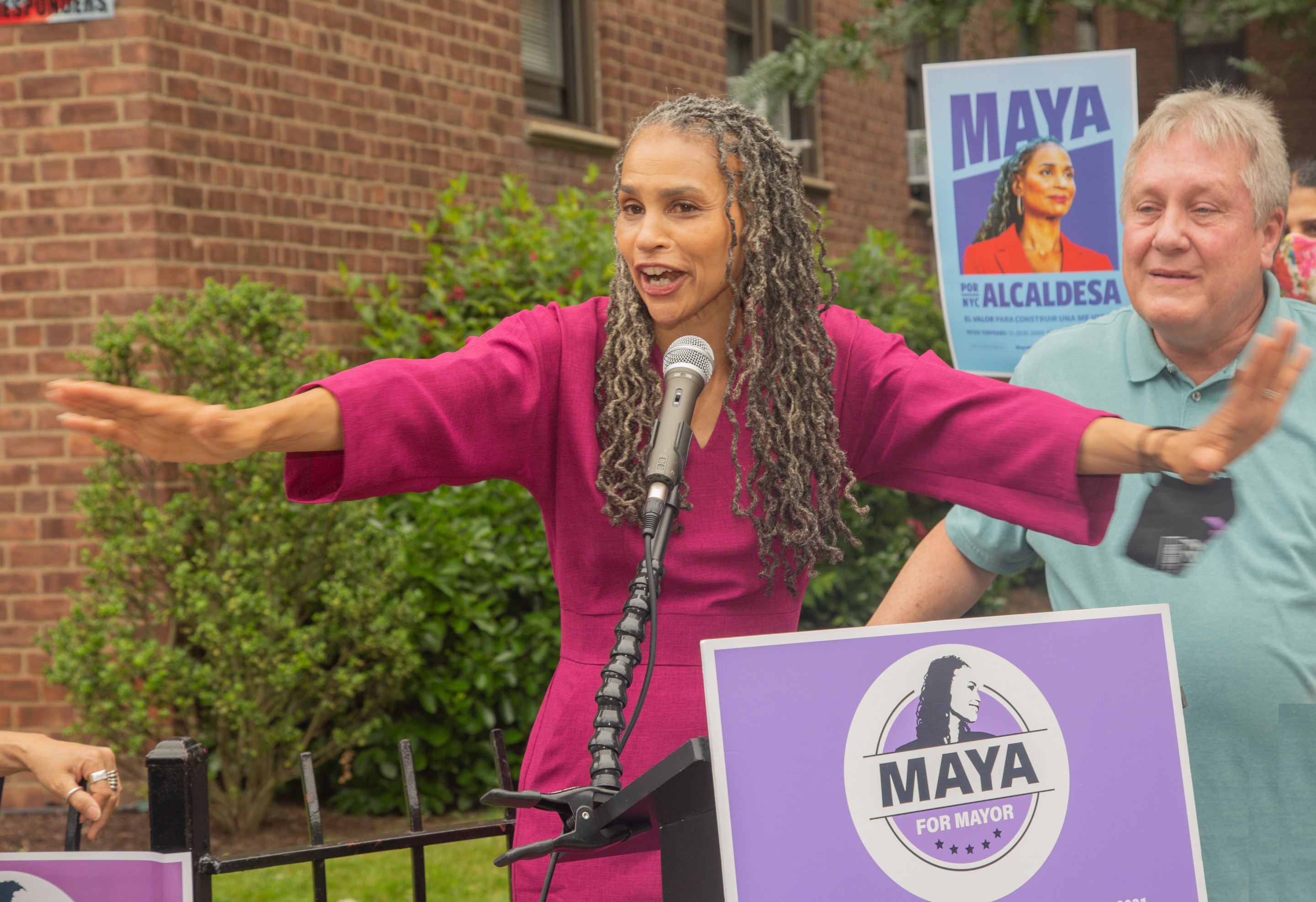Progressive mayoral hopeful Maya Wiley has joined the chorus of support for the creation of a linear park on 34th Avenue in Queens, signing the petition on Sunday and further dashing the hopes of anti-safety activists who seek to destroy what the city calls its "gold standard" open street.
Joining supporters of the linear park effort on Sunday on 34th Avenue, Wiley said she signed the petition because of how open streets make neighborhoods safer, more livable and simply better for kids.
"I have already vowed to double the amount of open and green space in this city ... and that's why we are going to do it on 34th Avenue," Wiley told residents, to cheers.
In discussing the issue later with Friends of 34th Avenue Linear Park members Henry Mei and Luz Maria Mercado, Wiley also touted her plan to create an Office of Open Space Management (sometimes referred to as the Office of Public Space Management), which she says will "to give streets back to New Yorkers, by permanently reallocating road space to walking, cycling, community gatherings, and green urban design projects."
"Every community is different, but you did the work and you've set us up with a project, and we've put money in the capital construction budget — in my plan — so that we have the money to actually do it," Wiley said.
Afterwards Mercado was moved.
"I thanked her for signing the petition and told her about how I'm a mom of two boys and how safe it is for them now to ride their bikes up and down 34th Avenue — and as a mom she understood the importance of a safe open space for kids," Mercado said.
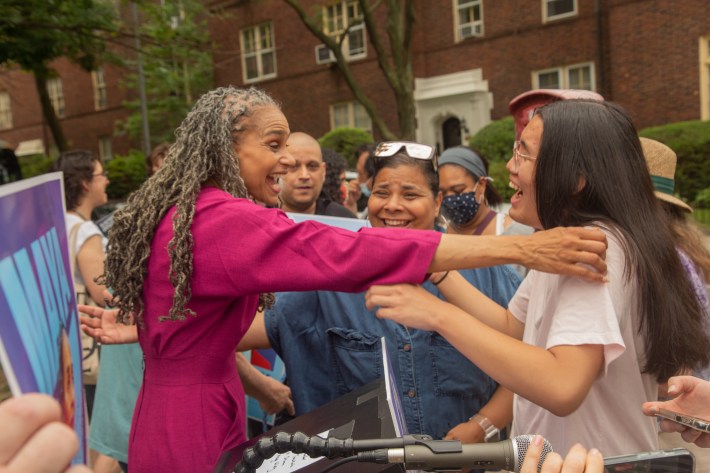
And Mei earned himself a hug from the candidate after he told her about growing up in Jackson Heights and attending public schools on 34th Avenue and how much hopes schools will be able to take advantage of the new public space created by the linear park idea.
"I wish I had had a pedestrianized 34th Avenue that I could use to walk to school safely and enjoyably," he said.
Wiley is just the latest mayoral candidate to support the linear park petition — Kathryn Garcia was the first, in late May, quickly followed by Art Chang and Andrew Yang (neither of whom got back to us immediately). Previously, the linear park earned the support of Queens Borough President Donovan Richards, the neighborhood's Assembly Member Jessica González-Rojas and Council Member Danny Dromm, one of the candidates to succeed that Council member (Shekar Krishnan), and every day residents — all of whom have penned op-eds for Streetsblog.
And Wiley is certainly not the first mayoral candidate to see the political appeal of reclaiming road space from cars (mostly stored cars that are doing nothing but getting in the way) and using it for public benefit. That concept is the idea behind he Transportation Alternatives' NYC 25X25 plan, which seeks to repurpose 25 percent of the roadway space currently allotted to cars.
If 25 percent of public space is going to be repurposed in the next mayor's first term, a lot of specific projects — like the linear park plan — will have to be undertaken, which explains why more and more candidates are embracing it. It remains to be seen what position Transportation Alternatives itself will take on the effort to create the first true 25X25 project on the ground on 34th Avenue. (The organization may simply be waiting to see what the Department of Transportation will present later this year.)

New Yorkers of all races and income levels tell pollsters that their lives are better when car traffic is reduced around them. For instance, in a recent survey commissioned by Streetsblog from the respected polling firm Data for Progress, we learned the following:
- 67 percent of voters said the city was right to close some roadways to traffic to create space for restaurants and people. The support was strong across the board:
- 66 percent of voters making less than $50,000 and 67 percent of voters making more than $150,000 agreed.
- 64 percent of Latino voters agreed (versus only 23 percent who didn't)
- The support was also strong in all age groups.
- 72 percent of voters say they prefer "livable streets that prioritize people's needs and their safety."
- The number rose to 77 percent among Black or African-American voters.
- And 72 percent of voters support livable streets in all income levels.
What is even more interesting is the racial breakdown of that survey. The overwhelming majority of voters who identified themselves as Latino or Hispanic support open streets (and, indeed, a majority — nearly 58 percent — of the people who live in Census blocks that straddle 34th Avenue identify as Hispanic or Latino). No matter how Streetsblog asked the question, we received largely the same answer from these voters, as the charts below show:
